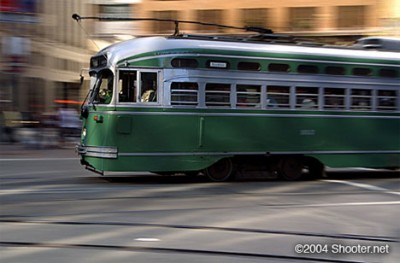Romance with streetcars reviving

They’re back! …and people are glad to see them again, for the country had a love affair with them before the infamous streetcar funeral pyres in the early 20th century via GM’s relentless agenda to replace them with their buses. But they’re not back for the reasons people may think – nostalgia. No siree, for believe it or not, cities are bringing back these lovable people movers because they make economic sense, and a lot of it as well.
Read more in this USA Today article, and check out what the streetcars look like in other cities here.
In Tampa, the city spent $55 million in a streetcar system, and it attracted well over $1 billion in private investment. In Portland, their brand new, modern streetcars attracted about 100 projects worth $2.3 billion within two blocks of the line in less than five years, including over 7000 housing units and 4.6 million s.f. of office and retail.
Why are streetcars such good investments?
– They arrive more frequently (see 5-minute rule), since they’re lighter, smaller, and more nimble than light rail.
– They’re very affordable. They cost about $10-$15 million a mile compared with $5-$75 million a mile for light-rail
– They’re less than 5 miles in length compared with 10-20 miles for light rail, which makes them less costly politically as well.
Streetcar systems are in place in cities throughout North America, in Toronto, Portland OR, Kenosha WI, Little Rock AR, , Tampa, St. Louis, New Orleans, with over three dozen on the way, including Tucson, Birmingham AL, Miami, Trenton NJ…
As one city transportation official put it, “Streetcars have sex appeal.”
Read more in a recent Wall Street Journal article, A Streetcar Named Aspire: Lines Aim to Revive Cities, June 20, 2007.

There is a lightrail system in sacramento that sometimes runs its streetcars…
There’s some significant momentum in Columbus (Ohio) for a streetcar system–starting from the mayor. The Christian Science Monitor saw fit to cover it (which I, in turn, covered).
The local TV news is a little less optimistic.
street cars are great, and they don’t use oil or gas
America’s sole viable alternative is steel wheel on steel rail – the most energy efficient land transport. And we need to electrify existing rail tracks, to reduce diesel consumption. To replace the automobile, we must build a new urban rail
infrastructure to accommodate the inevitable end of the Oil Age.